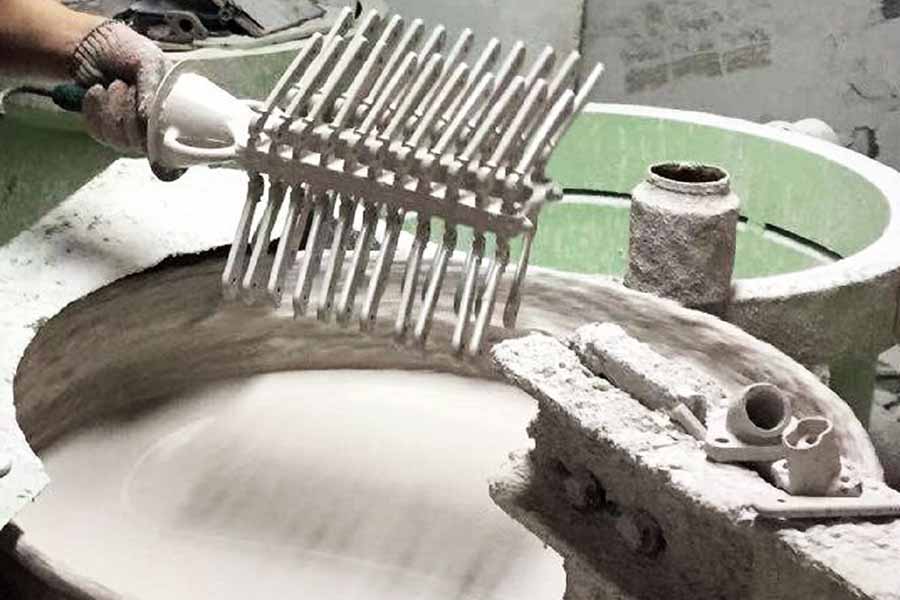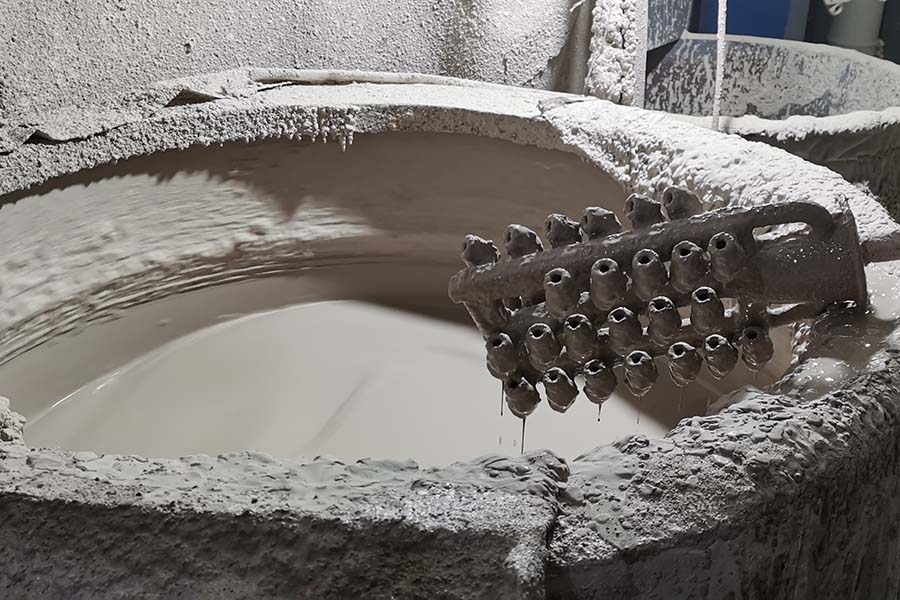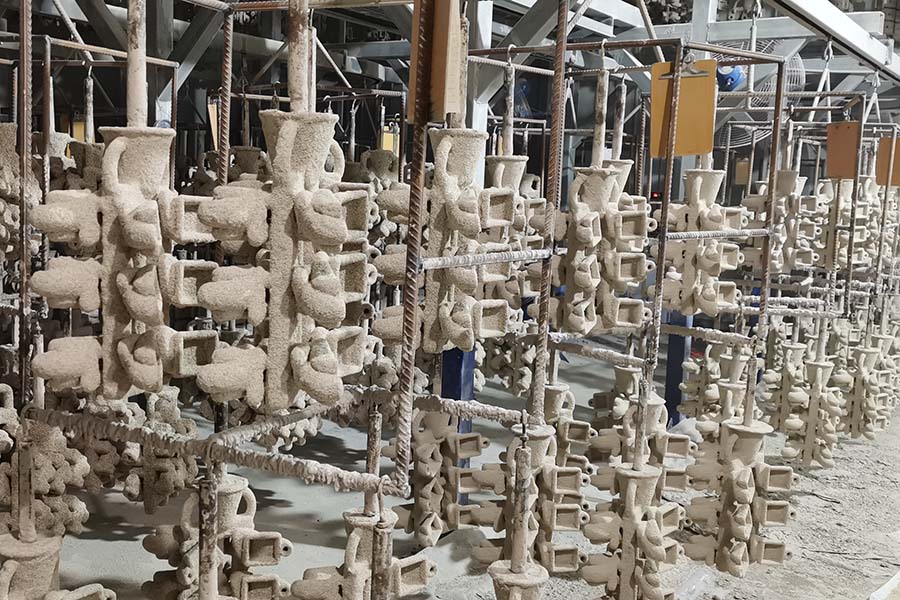Investment casting is to coat multiple layers of refractory coatings on the surface of the wax mold. After it is hardened and dried, the wax mold is melted by heating to obtain a shell with a cavity corresponding to the shape of the wax mold. After baking, it is poured into A method of obtaining castings, so it is also called lost wax casting. With the continuous improvement of production technology, new wax molding processes continue to appear, and the variety of materials available for molding is increasing. Now the method of mold removal is no longer limited to melting, and molding materials are not limited to wax materials. Plastic molds can also be used. Because the castings obtained by this method have higher dimensional accuracy and lower surface roughness values, it is also called precision casting.
The basic feature of investment casting is that a meltable disposable mold is used when making the shell. Because there is no need to draw the mold, the shell is integral without a parting surface, and the shell is made of refractory materials with excellent high temperature performance. Investment casting can produce complex-shaped castings, with a minimum wall thickness of 0.3mm and a minimum diameter of the casting hole of 0.5 mm. Sometimes in production, some parts composed of several parts can be combined into a whole by changing the structure and directly formed by investment casting. This can save processing man-hours and metal material consumption, and make the structure of the casting parts more reasonable.
The weight of castings produced by investment casting generally ranges from tens of grams to several kilograms, or even tens of kilograms. Too heavy castings are not suitable for investment casting due to the limitation of the performance of the molding material and the difficulty in making the shell.
Castings produced by investment casting are not limited by the types of alloys, especially for alloys that are difficult to cut or forge, which can show its superiority. However, investment casting production also has some shortcomings, mainly due to the large number of processes, long production cycles, complex technological processes, and many factors affecting the quality of castings, which must be strictly controlled to stabilize production.
Compared with other casting methods, the remarkable feature of investment casting is the use of meltable molds to make the shell. One investment mold is consumed every time a shell is manufactured. The necessary prerequisite for obtaining high-quality castings with high dimensional accuracy and low surface roughness values is an investment mold with high dimensional accuracy and low surface roughness values. Therefore, the performance of the molding material (referred to as the mold material), the quality of the molding (the pattern used to press the investment) and the molding process will directly affect the quality of the investment casting.
Investment casting molds are currently generally used in a shell made of multilayer refractory materials. After the module is dipped and coated with refractory coating, sprinkle the granular refractory material, and then dry and harden, and repeat this process many times until the refractory material layer reaches the required thickness. In this way, a multi-layer shell is formed on the module, which is usually parked for a period of time to fully dry and harden, and then demolded to obtain a multi-layer shell. Some multi-layer shells need to be filled with sand, and some do not. After roasting, they can be poured directly, which is called a high-strength shell.
The quality of the shell is directly related to the quality of the casting. According to the working conditions of the shell, the performance requirements of the shell mainly include:
1) It has high normal temperature strength, suitable high temperature strength and low residual strength.
2) It has good air permeability (especially high temperature air permeability) and thermal conductivity.
3) The linear expansion coefficient is small, the thermal expansion is low and the expansion is uniform.
4) Excellent resistance to rapid cold and heat and thermochemical stability.
These properties of the shell are closely related to the materials used in the shell making and the shell making process. Shell materials include refractory materials, binders, solvents, hardeners, surfactants, etc. Among them, the refractory material and the binder directly form the shell, which is the main shell material. The refractory materials used in investment casting are mainly silica sand, corundum and aluminosilicate refractories (such as refractory clay and aluminum banadium, etc.). In addition, zircon sand and magnesia sand are sometimes used.
Powdered refractory material and binder are prepared into refractory coating, and the granular refractory material is sprinkled on the refractory coating when the shell is made. Binders used in refractory coatings mainly include ethyl silicate hydrolysate, water glass and silica sol. The paint prepared with ethyl silicate has good coating properties, high shell strength, small thermal deformation, high dimensional accuracy of the obtained castings, and good surface quality. It is mostly used to produce important alloy steel castings and other castings with high surface quality requirements. The SiO2 content of ethyl silicate produced in China is generally 30% to 34% (mass fraction), so it is called ethyl silicate 32 (32 represents the average mass fraction of SiO2 in ethyl silicate). Ethyl silicate can play a binding role only after hydrolysis.
The coating shell prepared with water glass is easy to deform and crack. Compared with ethyl silicate, the castings produced have low dimensional accuracy and high surface roughness. Water glass binder is suitable for the production of small ordinary steel castings and non-ferrous alloy castings. Water glass for investment casting usually has a modulus of 3.0~3.4 and a density of 1.27~1.34 g/cm3.
Silica sol binder is an aqueous solution of silicic acid, also known as silica sol. Its price is 1/3~1/2 lower than that of ethyl silicate. The quality of castings produced by using silica sol as a binder is higher than that of water glass. The binding agent has been greatly improved. Silica sol has good stability and can be stored for a long time. It does not require special hardeners when making shells. The high temperature strength of the shell is better than that of ethyl silicate shells, but the silica sol has poor wettability to the investment and takes longer to harden. The main processes of shell making include module degreasing, coating and sanding, drying and hardening, demoulding and roasting.


Post time: Feb-11-2021


